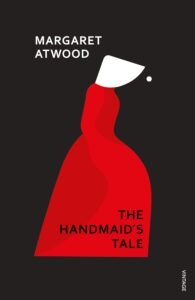“The Handmaid’s Tale” by Margaret Atwood is a dystopian novel set in the near future, where a totalitarian regime called the Republic of Gilead has overthrown the United States government. The novel follows the story of Offred, a “Handmaid” whose sole purpose is to bear children for the ruling class. Atwood explores themes of power, control, gender inequality, and the loss of personal freedom in this chilling portrayal of a society that systematically oppresses women.

Key Takeaways:
1. Gender Oppression: The novel is a stark portrayal of a society where women’s rights are entirely stripped away, reducing them to mere reproductive vessels. It serves as a warning about the dangers of extreme patriarchy and religious fundamentalism.
2. The Power of Language: Language is a tool of control in Gilead, where women are forbidden to read or write. The manipulation of language reflects the broader manipulation of society by the ruling regime, showing how control over language can equate to control over thought and identity.
3. Resistance and Rebellion: Despite the oppressive environment, the novel emphasizes the importance of resistance, both overt and covert, as Offred and others find ways to subvert the regime’s control.
4. The Loss of Identity: The characters in Gilead are stripped of their previous identities, as shown by the renaming of Handmaids based on the names of the men they serve (e.g., “Offred” means “Of Fred”). This loss of personal identity underscores the dehumanization inherent in the regime.
5. The Dangers of Extremism: Atwood’s novel is a cautionary tale about the dangers of extreme ideologies, particularly those that seek to impose rigid, authoritarian control over society, often justified in the name of religion or morality.






Discussion about this post